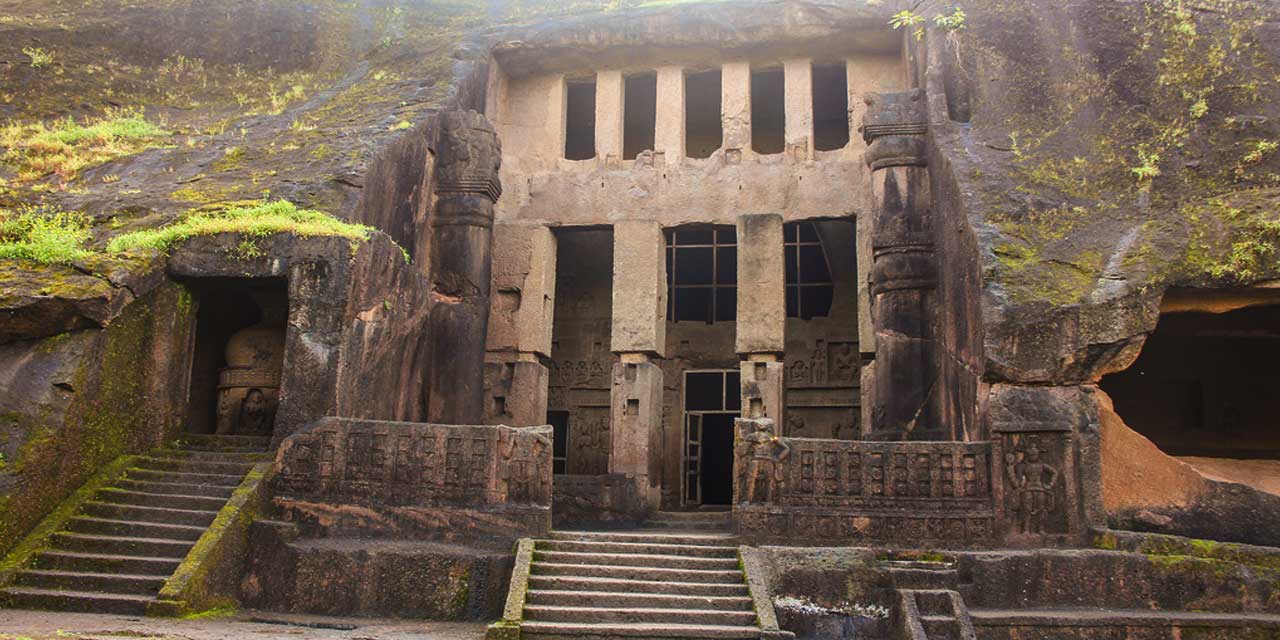The Kanheri Caves: A Timeless Buddhist Heritage
The Kanheri Caves, located within the lush green surroundings of the Sanjay Gandhi National Park in Mumbai, are among the most remarkable rock-cut monuments of India. Hidden amidst dense forests and hills, these caves carry the echoes of Buddhist chants, the artistry of ancient craftsmen, and the traces of a flourishing monastic life. Kanheri, derived from the Sanskrit word Krishnagiri meaning “black mountain,” is named after the basalt rock formations on which the caves were carved. Today, this complex of caves is not just an archaeological wonder but also a spiritual and cultural heritage site that takes us back nearly two thousand years.
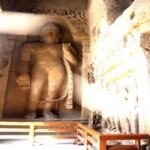


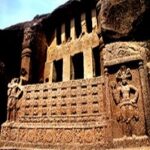
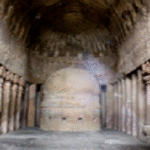

Historical Background
The Kanheri Caves date back to the 1st century BCE and were continuously developed until the 10th century CE. They represent the growth of Buddhism in western India, particularly under the Satavahana, Traikutaka, and Silhara dynasties. During this time, Buddhism was not just a religion but also a way of life that shaped art, architecture, and education. The caves were primarily a monastic settlement for Buddhist monks who lived, meditated, taught, and spread the message of the Buddha from here.
Kanheri became an important center for Buddhist learning and missionary activities. The monks used it as a training ground, and the location—close to ancient trade routes—helped in spreading Buddhism to distant lands. The inscriptions found in the caves record donations from merchants, kings, and ordinary devotees, proving that the caves were not isolated structures but deeply connected to society and economy.
Architecture and Layout
The Kanheri complex consists of over 110 caves, carved into the rocky hillside. These caves vary in design and size, from simple cells used as monks’ residences to large chaityas (prayer halls) and viharas (monasteries). The architectural style reflects the evolution of Buddhist rock-cut architecture over centuries.
- Chaitya Halls: The most significant of these is Cave 3, a large chaitya-griha or prayer hall. It features a massive stupa at the center and rows of tall, elegant pillars. The arched entrance and the vaulted ceiling with wooden ribs resemble other famous Buddhist cave sites like Karla and Ajanta. This hall was a place for communal prayers and gatherings.
- Viharas: The majority of the caves served as viharas, or monastic dwellings. These are simple rectangular rooms with stone benches, used by monks for meditation, study, and living. Some larger viharas include pillared halls and stone-cut beds.
- Inscriptions and Sculptures: The caves are adorned with inscriptions in Brahmi and Devanagari scripts, mentioning donors and Buddhist teachings. Sculptures of the Buddha in meditation, Bodhisattvas like Avalokiteshvara, and scenes from Buddhist Jataka tales enrich the caves. Some carvings display the shift from Hinayana (early Buddhism, with emphasis on symbols like stupas) to Mahayana (later Buddhism, focusing on Buddha images and Bodhisattvas).
- Water Management System: One of the most fascinating features of Kanheri is its advanced system of water cisterns and channels. The monks cleverly carved water tanks to store rainwater, which provided a sustainable source of drinking water and highlights their deep knowledge of resource management.
Spiritual and Cultural Significance
The Kanheri Caves were more than just living quarters; they were vibrant centers of spiritual practice. The serene environment of the forested hills made it an ideal place for meditation and study. Monks and students studied Buddhist scriptures, philosophy, medicine, and other subjects here. The presence of stupas, chaityas, and intricately carved Buddha statues reflects the spiritual devotion of the community.
The site also played a major role in the transition of Buddhism from Hinayana to Mahayana traditions. The shift is evident in the increasing number of Buddha images and Bodhisattva figures carved in later periods. This transition made Kanheri a crucial landmark in the history of Indian Buddhism.
Kanheri and the Trade Routes
Kanheri’s location was strategic. It stood near the ancient trade routes that connected ports on the western coast with the hinterland. Merchants and travelers often visited these caves, contributing donations to the monks. This patronage allowed the caves to grow and flourish. The inscriptions found here mention gifts of money, land, and infrastructure, proving that Buddhism was supported by both rulers and common people alike.
Kanheri Today
Today, the Kanheri Caves are part of Sanjay Gandhi National Park and attract thousands of visitors, including historians, archaeologists, devotees, and tourists. The caves are a window into the spiritual and artistic life of ancient India. The peaceful setting, surrounded by greenery and wildlife, adds to their charm.
For modern-day Mumbai, a bustling metropolis, Kanheri provides a rare retreat into the past. Walking through the caves, one can imagine monks chanting in the prayer halls, students learning in the viharas, and artists patiently carving sculptures into hard basalt rock.
Conclusion
The Kanheri Caves are not just stone monuments, but a living legacy of India’s Buddhist past. They reflect the devotion, discipline, and creativity of monks and artisans who lived centuries ago. Their architecture shows a blend of simplicity and grandeur, while their inscriptions remind us of the close bond between religion, trade, and community.
In essence, Kanheri is a testimony to how faith can shape culture, art, and architecture in enduring ways. Even today, amid the noise of Mumbai, these caves stand in silence, offering peace, history, and inspiration to those who seek it.
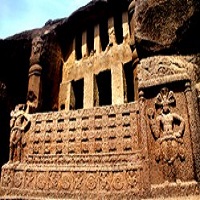 |
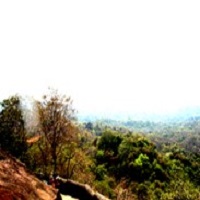 |
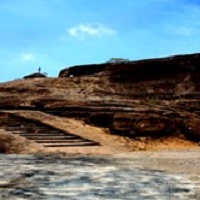 |
|---|---|---|
| Cave with exterior designs | Sanjay Gandhi National Park | Way For Next 105 Caves |
All pictures: Amitabh Tripathi

